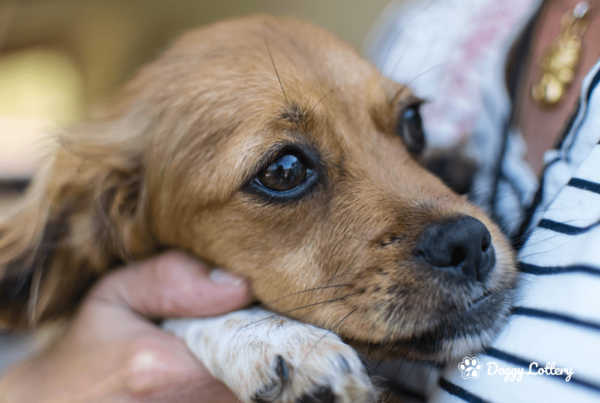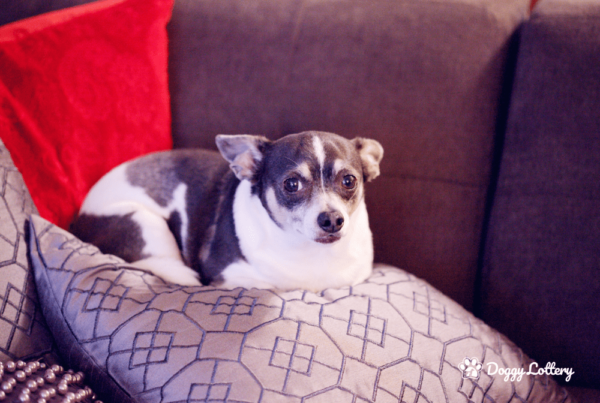
Training is part and parcel of getting a dog and helps it adjust to our world. Due to the often, unfortunate previous experiences of a rescue dog’s life, training is even more important. Training will help develop a strong relationship between you and your rescue to ensure they understand that you will make the decisions and keep them safe. This is vital for their well being and for you to have a relaxed life together.
Are you thinking of adopting a rescue dog but you’re worried about how to train them? Or have you already adopted a dog and you’re now wondering how long the training will take?
Keep reading to learn more about training a rescue dog.
Will my rescue dog have behavioural issues?
Considering so many rescue dogs have sad stories, it’s likely that as soon as your rescue dog arrives in your home their life will have improved drastically from what they have experienced before. As soon as they arrive in their new home, you’ll be showing them lots of love and affection. Plus, you’ll be providing shelter and food and taking them for walks. However, because of their difficult pasts and challenging experiences, your rescue dog may display some behavioural issues that need addressing. In this case, you’ll want to know:
How long will it take to address my rescue dog’s undesirable behaviour?
To understand any situation, it is vital we delve into the variables that influence this behaviour. But first, a very important fact to divulge is this:
There are literally thousands of dogs waiting to be rehomed with no behavioural issues whatsoever.
So if you are thinking about adopting, don’t let a dog being a rescue put you off. Just be sure to do thorough research that will help you find a rescue that suits your requirements.
How long will training take?
The variables that influence a rescue dog’s behaviour and how long it will take to train them include:
- how deep-rooted the dog’s behavioural issues are,
- what environment you are rehoming the dog in,
- your skill level of training.
Every rescue dog has a different past, from relaxed and carefree to traumatic. At the same time, each adopter will rehome their dog into different environments – from calm countryside to busy city. What’s more, each adopter will have different levels of dog training skills – from absolutely none to expert knowledge! Therefore, it’s impossible to say how long training a rescue dog will take. It can range from days and weeks to months or even years in the more severe cases.
Adopting a rescue dog means adopting the right mindset
To speed up the training process, it is vital you get into the right mindset.
First, keep reminding yourself, and I will remind you now…
YOU HAVE DONE AN AMAZING THING!
Your dog is now much happier than they were. If your dog could thank you, they would! You can’t change their past, but you have already changed their future. So just be patient and keep striving to improve their life further. Know that this will take as long as it takes.
Establish a calm environment
Next, be sure to seek out a calm environment to train your dog in and once they understand what is expected of them and they appear relaxed and responsive, you can progress by moving onto the next stage.
The first stage of the process is being somewhere they are relaxed in, such as the home, and then build up to where they panic, such as a busy park. Figure out every stage in between and don’t progress unless they are ready to move forward.
Take training step by step
Approach training a rescue dog as if you are teaching a child to swim. At first, you should encourage them to swim a short distance, such as half a metre. This should be in the shallow end with the support of armbands to help them develop their technique and avoid stress. At each point, you should address the child’s safety needs by being there to look after them. By taking it one step at a time, you are also considering the child’s confidence needs. Once they are competent and confident in swimming half a metre, encourage them to swim further. Gradually progress over time until they are swimming long distances without armbands and without your help.
In this example, each longer distance can be identified as a stage, and how long each stage takes will differ between individuals. We must proceed at each individual’s pace, only moving forward once the pupil (a child who is learning to swim, or in this case, a rescue dog) is in a relaxed state and the stage is complete.
Boost your training skills!
Finally, we can all improve our training skill level. There is so much free information on YouTube, plus there are books written by trainers that give great advice! I recommend finding the trainer that suits your style. There are trainers that can come to you for a one-off session, or trainers that offer intensive training sessions. Every tip and trick will better your understanding, so keep learning a bit more each day and you will get there.
Need some motivation? Watch this video to show the transformation from aggressive dog to calm and relaxed.
About Nigel Reed
Nigel Reed (The Dog Guardian) is an Amazon best selling author and dog behaviourist with fifteen years experience working with all types of problem behaviour. He has over 7 million views on his YouTube channel and has helped thousands of clients address their dog’s problem behaviour including high profile celebrities such as Derren Brown and Evan Davis. Through his own experiences working with dogs, learning from multiple experts and reading books on child behaviour Nigel has finely tuned his learnings into a highly effective holistic approach that anyone can follow.
Adopting a dog is a wonderful thing for anyone to do, but it is a big commitment to make. If you’re unsure, try answering these six questions to find out if you’re really ready for a dog.



